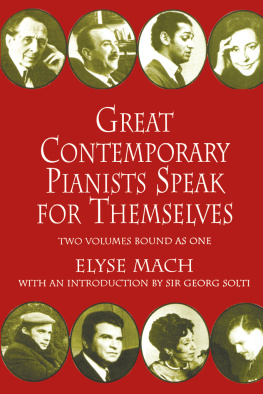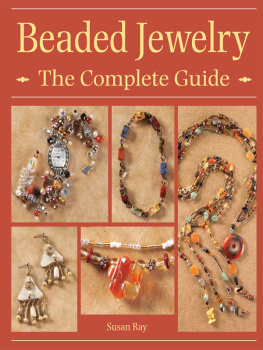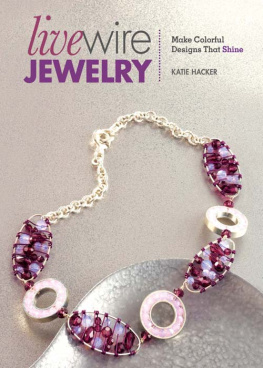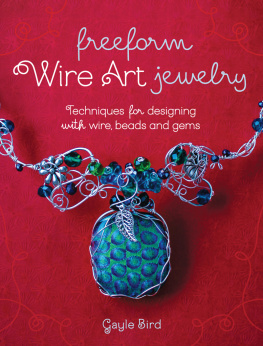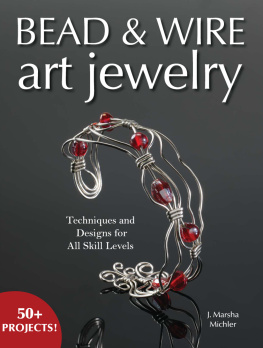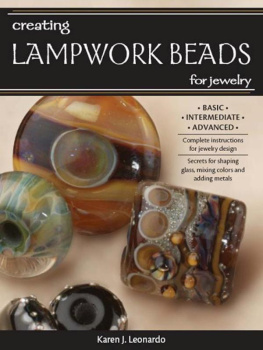Clever Jewelry Designs Featuring Everyday Components
Michelle Mach

To Neal Krawetz, for encouraging me to follow my dreams

Contents
Introduction
Beads are the stars on the jewelry stage. Theyre the ones twirling, singing, and shouting while the findings scuttle backstage, working the lights and opening and closing the red velvet curtains. Ever wonder what would happen if their roles were reversed?
One of my earliest magazine submissions shone a spotlight on that very question. Id created an agate-and-pearl necklace that seemed almost right. With the deadline coming up quickly, I didnt have the luxury of shopping for the perfect finishing touch. Rummaging through some drawers, I found a package of copper cones, the kind normally used to corral the ends of multistrand necklaces. I added them to chain as empty dangles and sold the design to Jewelry Stringing magazine.
This habit of using findings for something other than their intended purpose became a hallmark of my work. Not only was it fun to turn ring shanks into earrings or empty knot cups into darling dangles, but it led to an unexpected benefit as well.
I love buying findings, in part because Ive convinced myself its practical. It may take me years to figure out how to use those orange-and-magenta striped ceramic tubes, but I could use that silver toggle over the weekend. Did you notice that important word? Could. Yes, Im talking about stash guilt. All those findings you already own that you could use, but arent. You know what I mean: there are those hundred gunmetal spacer bars in the completely wrong size and those fold-over bails you bought before you learned you prefer wire-wrapped bails. If you stick exclusively with the by-the-book rules for using findings, we may all be living in a colony on Mars before you see the bottom of your findings drawer.
It doesnt need to be that way. All those findings can be used, just maybe not in the way you originally intended. Ive gathered fifty all-new necklace, bracelet, and earring projects that use common findings such as jump rings, head pins, and clasps in unusual ways. (These featured findings are set in colored type in the materials list of each project to make them easy to find.) Along with my designs, youll see creative jewelry projects from all-star designers Lorelei Eurto, Jamie Hogsett, Denise Yezbak Moore, Erin Prais-Hintz, Molly Schaller, Erin Siegel, Erin Strother, Barb Switzer, Andrew Thornton, and Cindy Wimmer.
Whether you make one project or dozens, I hope youll be inspired to use findings in your own unique ways. Now pick a finding, any finding, and repeat after me: What if ?
Michelle
Make It Your Own
Years ago I visited a bead shop with a friend. She loved a pretty fuchsia-and-green glass necklace on display, but the exact beads were no longer available. She didnt feel confident about making substitutions and left empty-handed.
Sound familiar? It can be frustrating to learn that beads and findings come and go. Just as you might have trouble finding a swimsuit in December or bell bottoms after the 1960s have passed, that exact bead or chain or clasp might no longer be manufactured. What can you do?
While it might feel scary at first, deviating from a published design will help you discover your own artistic voice. Start small. Substitute an 8mm navy round for an 8mm green round. Changing just one aspect, such as color, and keeping others, such as size and shape the same, minimizes the risk that youll be unhappy with the final result. As you gain experience, youll be able to zero in not only on the materials used in a design, but also on the structure, mood, and techniques, and youll be able to customize it even further.
Once you start making changes to a design, its possible to move so far away from the original design that youll have created something completely different. Still having doubts? Take a look at the variations that the designers and I created for many of the projects. With a little practice, you, too, can learn to use findings your way.
Findings
A definition for findings can be surprisingly hard to find! Everyone agrees that you need these small components to create finished jewelry, but jewelry makers differ on what precisely falls into this category. Some include anything that isnt a bead, including pendants, spacers, or flexible beading wire, while others remove stringing and beadlike materials. Not only that, different people may use different names for the identical finding. In this section, youll find descriptions of the most common findings, along with common alternative names and a few simple design ideas.
Bails
A bail is used to connect a pendant to the center of a necklace. Here are the most common kinds:
Bails
Briolette bails (1)
These bails have two pointed ends that you push together to close. As the name suggests, theyre often used with briolettes, or teardrop-shaped beads.


